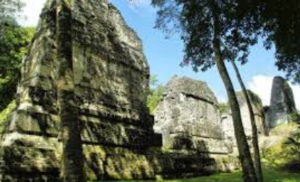The jungles of the Balamakú ecological reserve on the Yucatan Peninsula recently offered up a remarkable look at an ancient Maya city, one likely to be rather regionally prominent. Though it is over 1,000 years old, this city wasn’t known to the modern age. Its re-discovery comes thanks to airborne laser scanning (LiDAR) and subsequent on-the-ground archeology.
Tucked some 37 miles deep in the jungle, a research team—led by Ivan Ṡprajc, a professor of archaeology from Slovenia who has directed work on the Yucatan Peninsula since 1996—took info from the airborne scan to discover the true location of a 1,000-year-old Maya city complete with complex buildings, plazas, and even a ball game site.
Highlighted by several pyramidal structures over 50 feet tall, the city is perched on a peninsula of high ground surrounded by extensive wetlands. The 123-acre site includes three plazas featuring “imposing buildings and surrounded by several patio groups,” according to Mexico’s National Institute of Anthropology and History (INAH), the group working to explore the densely vegetated reserve in the state of Campeche.
Read more: Popular Mechanics
Ask me anything
Explore related questions





